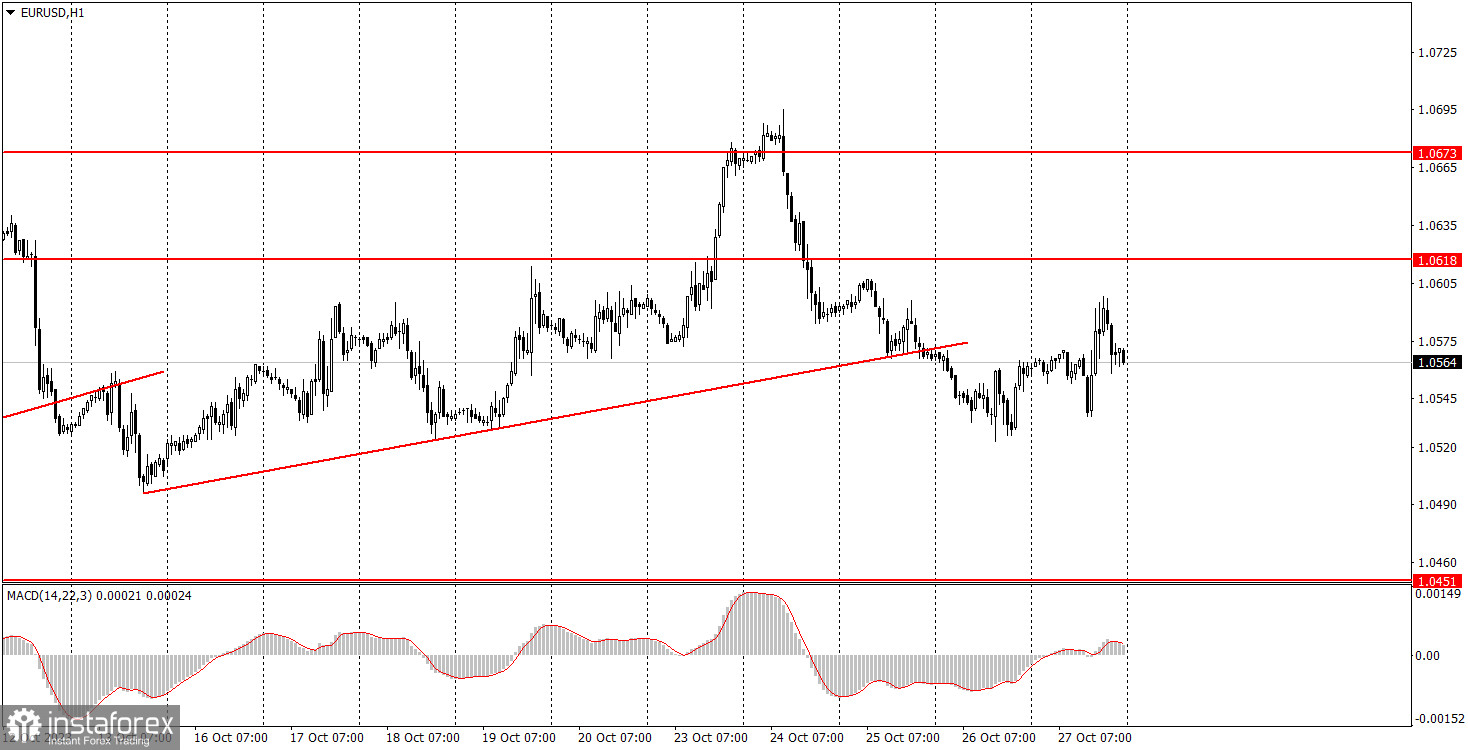Analysis of macroeconomic reports:

For Monday, the lineup of macroeconomic events is practically barren. The only notable event is the consumer price index in Germany, which is not crucial on its own since there's also the eurozone-wide inflation gauge, which is more prioritized when it comes to the euro's case. However, inflation in Europe might slow down sharply in October, so the market could react with a significant move and volatility could gradually increase due to these reports. Overall, we believe that Monday will be quite an uneventful day.
Analysis of fundamental events:

There are no fundamental events scheduled for Monday. However, we can look forward to the meetings of the Federal Reserve and the Bank of England, so there will be no shortage of events in the near future. The market might even start pricing in these events in advance, although there might not be much to act on as early as now. It's quite likely that both central banks will leave their interest rates unchanged.
General conclusion:
Hardly any significant events on Monday, so we don't expect strong trends from both currency pairs. Most likely, we will witness a "quiet Monday."
Basic rules of a trading system:
1) Signal strength is determined by the time taken for its formation (either a bounce or level breach). A shorter formation time indicates a stronger signal.
2) If two or more trades around a certain level are initiated based on false signals, subsequent signals from that level should be disregarded.
3) In a flat market, any currency pair can produce multiple false signals or none at all. In any case, the flat trend is not the best condition for trading.
4) Trading activities are confined between the onset of the European session and mid-way through the U.S. session, post which all open trades should be manually closed.
5) On the 30-minute timeframe, trades based on MACD signals are only advisable amidst substantial volatility and an established trend, confirmed either by a trend line or trend channel.
6) If two levels lie closely together (ranging from 5 to 15 pips apart), they should be considered as a support or resistance zone.
How to read charts:
Support and Resistance price levels can serve as targets when buying or selling. You can place Take Profit levels near them.
Red lines represent channels or trend lines, depicting the current market trend and indicating the preferable trading direction.
The MACD(14,22,3) indicator, encompassing both the histogram and signal line, acts as an auxiliary tool and can also be used as a signal source.
Significant speeches and reports (always noted in the news calendar) can profoundly influence the price dynamics. Hence, trading during their release calls for heightened caution. It may be reasonable to exit the market to prevent abrupt price reversals against the prevailing trend.
Beginning traders should always remember that not every trade will yield profit. Establishing a clear strategy coupled with sound money management is the cornerstone of sustained trading success.





















